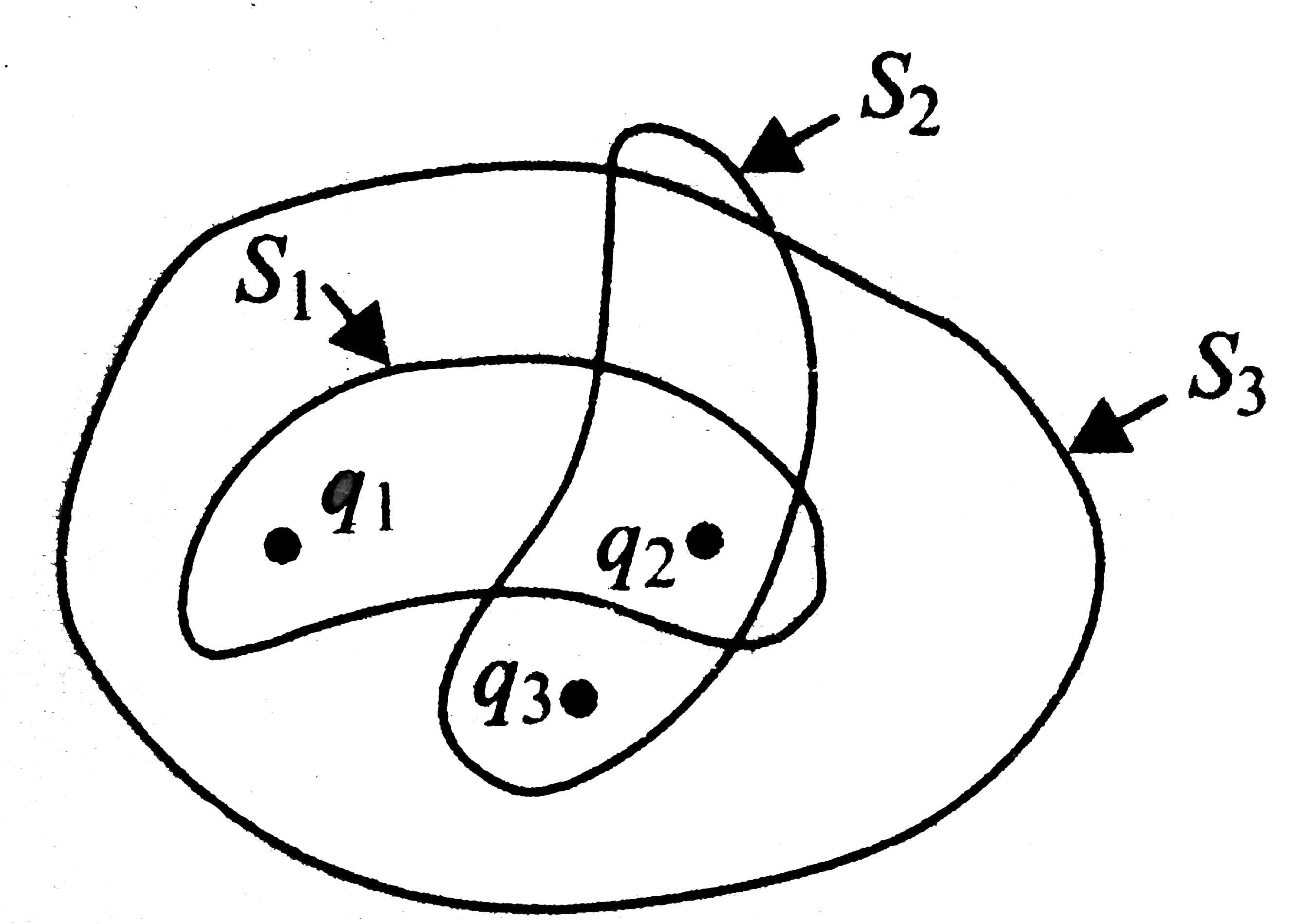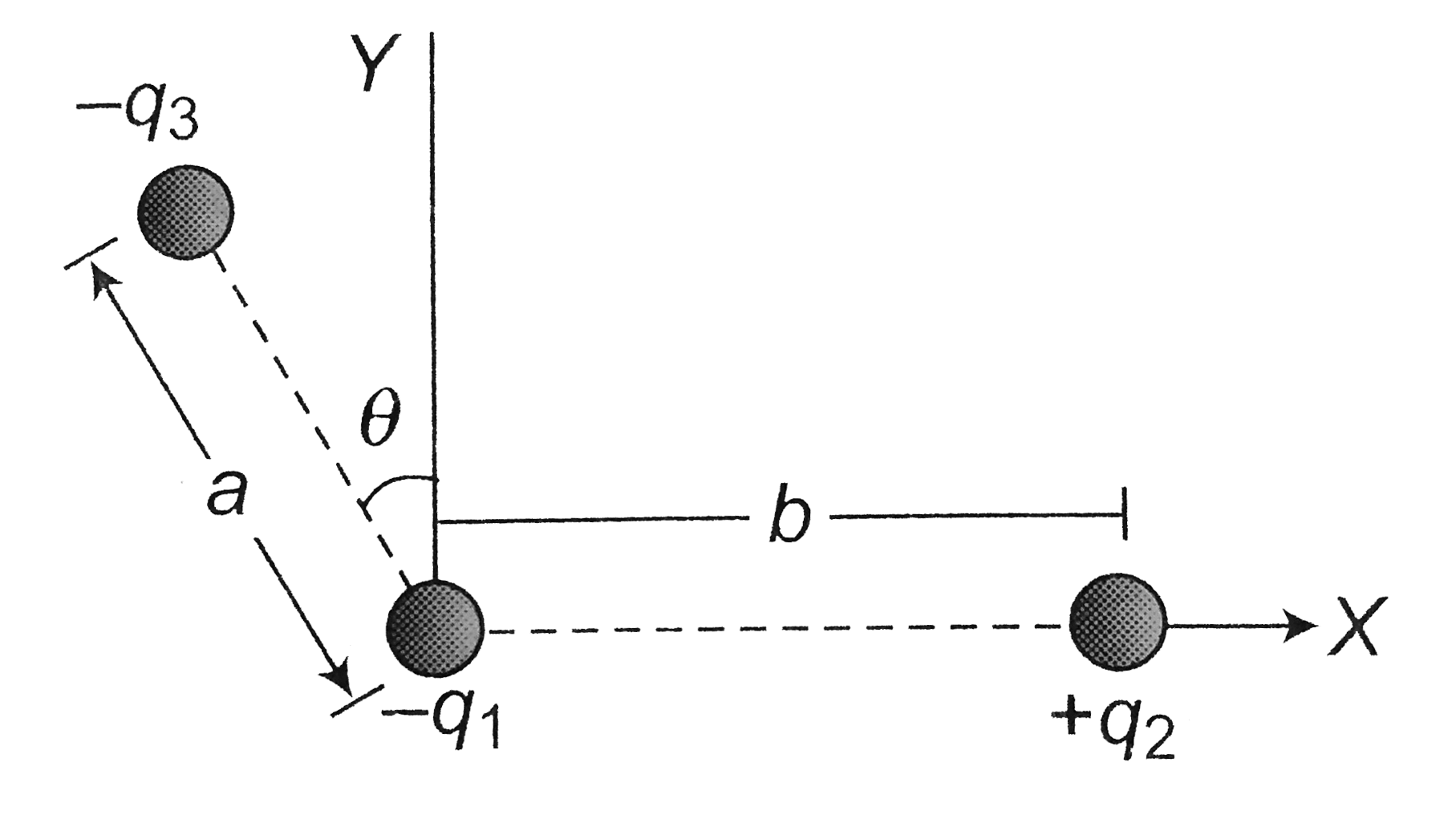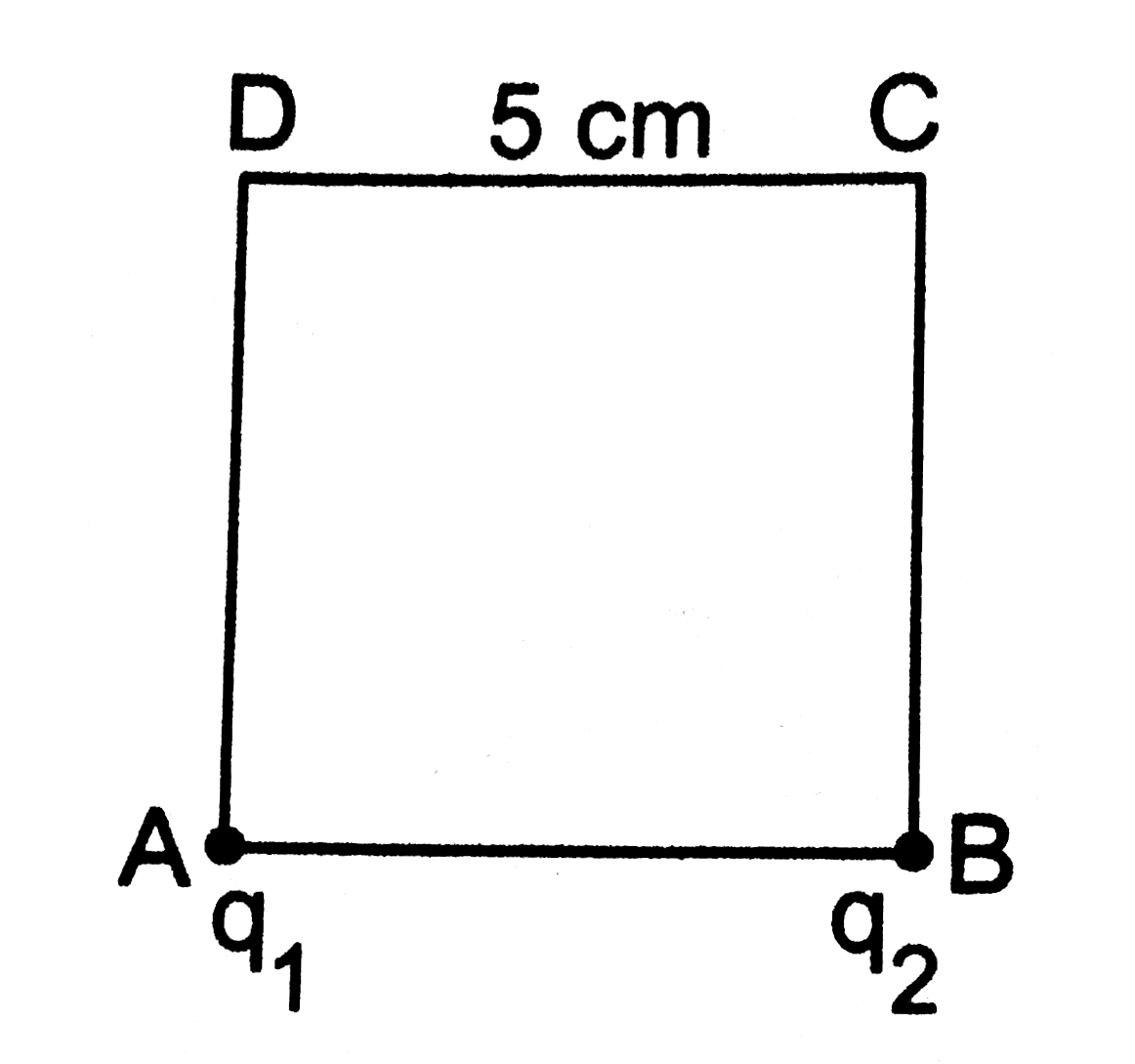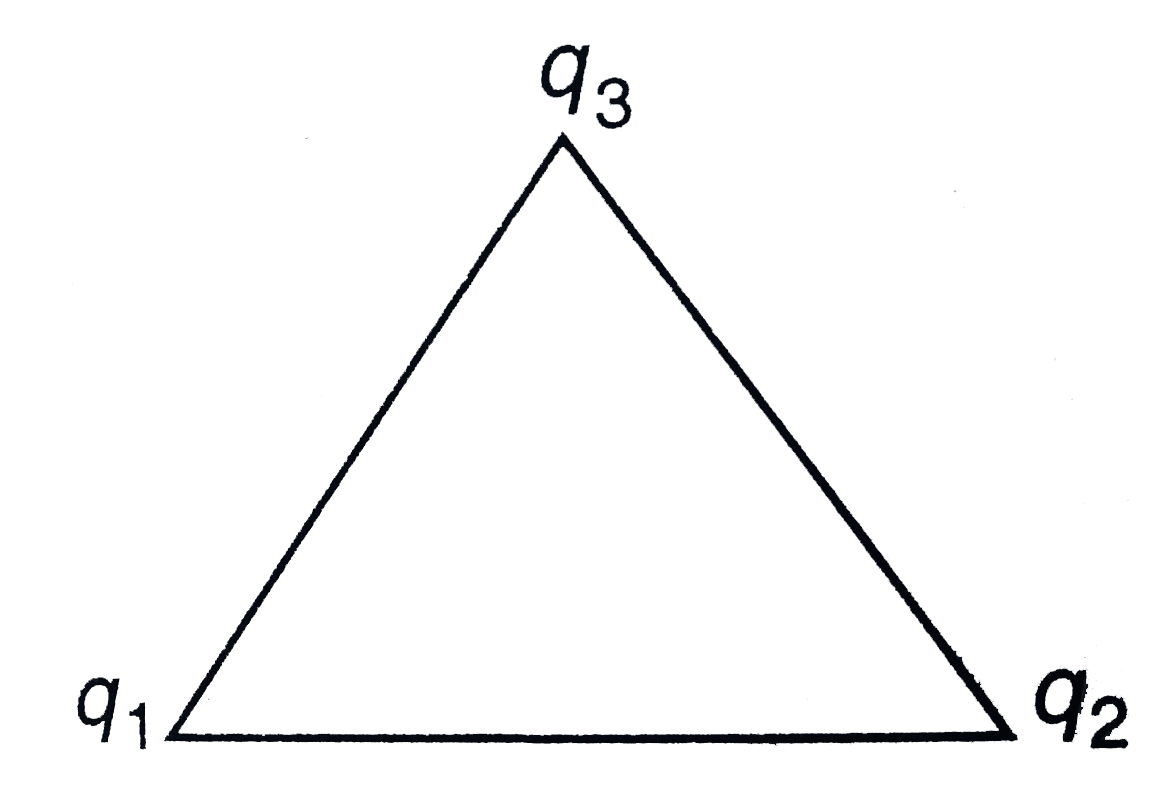Three charges q1=1×10−6C,q2=2×10−6C,andq3=−3×10−6C have been placed as shown in figure. Then the net electric flux will be maximum for the surface

1. S1
2. S2
3. S3
4. same of all three
The correct Answer is:A
a. Charge inside S1 = q1+q2=3×10−6C
Charge inside S2 = q2+q3=−1×10−6C
Charge inside S3 = 0
Charge inside S1 is greatest. So, flux through S1 is maximum.
Topper's Solved these Questions
- BOOK - CENGAGE PHYSICS ENGLISHCHAPTER - ELECTRIC FLUX AND GAUSS LAWEXERCISE - Multiple Correct8videos
ELECTRIC FLUX AND GAUSS LAW
- BOOK - CENGAGE PHYSICS ENGLISHCHAPTER - ELECTRIC FLUX AND GAUSS LAWEXERCISE - Comprehension36videos
ELECTRIC FLUX AND GAUSS LAW
- BOOK - CENGAGE PHYSICS ENGLISHCHAPTER - ELECTRIC FLUX AND GAUSS LAWEXERCISE - Subjective12videos
ELECTRIC FLUX AND GAUSS LAW
- BOOK - CENGAGE PHYSICS ENGLISHCHAPTER - ELECTRIC CURRENT AND CIRCUITEXERCISE - Interger8videos
ELECTRIC CURRENT AND CIRCUIT
- BOOK - CENGAGE PHYSICS ENGLISHCHAPTER - ELECTRIC POTENTIALEXERCISE - DPP 3.515videos
ELECTRIC POTENTIAL
Similar Questions
Two point charges q1=2×10−3C and q2=−3×10−6C are separated by a distance x=10 cm. Find the magnitude and nature of the force between the two charges.
View SolutionAn electric dipole of diople moment 20×10−6Cm is enclosed by a closed surface. What is the net electric flux coming out of the surface ?
View SolutionThree charges −q1,+q2 and −q3 are placed as shown in the figure. The x-component of the force on −q1 is proportional to
 View Solution
View Solutioncharges 2.0×10−6C and 1.0×10−6C are placed at. corners A and B of a squae of side 5.0cm as shown in. figure .how much work will be done against. the electric field in moving a charge of 1.0 xx 10^(-6) C from. C to D?.
 View Solution
View SolutionThree charges q1=1μC,q2=2μC and q3=3μC are placed on the vertices of an equilateral triangle of side 1.0 m. Find the net electric force acting on charge q1
 View Solution
View SolutionCharges 5.0×10−7C,−2.5×10−7Cand1.0×10−7C are
held fixed at the three corners A, B, C of equilateral triangle of side 10cm respectively. Find the electric force on the charge at C due to the rest two.View SolutionThree charges q1=1μC,q2=−2μC,andq3=−1μC are placed at A(0,0,0),B(−1,2,3,)andC(2,−1,1). Find the potential of the system of three charges at P(1,−2,−1).
View SolutionTwo particles A and B, having opposite charges2.0×10−6 and −2.0×10−6C , are placed at a separaton of 1.0 cm.(a) write down the electric dipole moment (b) Calculate the electric field at a point on the axis of the dipole 1.0 m away from the centre. (c ) Calculate the electric field at a point on the perpendicular bisector of the dipole and 1.0 m away from the centre.
View SolutionThe rate constant of a reactant is 1.5×10−3 at 25∘C and 2.1×10−2 at 60∘C. The activation energy is
View SolutionTwo point charges q1=2×10−3C and q2=−3×10−6C are separated by a distance x=10 cm. Find the magnitude and nature of the force between the two charges.
View Solution

